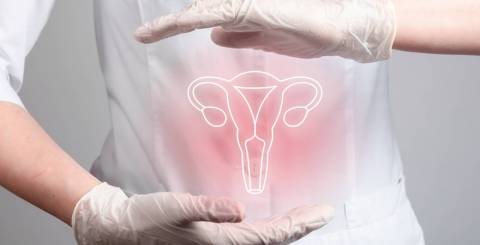Common Myths and Facts About Cervical Health

The cervix's proper functioning is crucial to a woman's reproductive health and fertility. However, most women do not know anything or have a limited understanding of it. As a result, there are numerous misconceptions surrounding cervical health.
In this post, we will look at the role of the cervix and try to dispel some myths about it.
Cervix and its function.
The channel or gateway that links the vagina to the womb (uterus) is called the cervix. It is round, plump, and extremely little, with the shape of pursed lips with a dimple in the center.
It's small opening only allows discharge, menstruation, and sperm to pass through. This function prevents pathogens and materials (such as tampons) from entering the uterus.
It works as a pregnancy stopper to protect the baby from infections.
Cervical cancer is hereditary.
It’s a myth. Breast and ovarian cancer are genetic, according to multiple research on women. Cervical cancer, on the other hand, is not passed on from generation to generation because the latter is the result of a viral infection.
By providing the HPV vaccination, a young girl up to the age of 26 can be inoculated against it. If a woman has reached that age, she can get a regular Pap Smear test to protect herself.
The most common type of cancer among women is cervical cancer.
It is a complete myth. Cervical cancer is not the most frequent type of cancer in women. Breast and skin cancers are the most common. Cervical cancer, on the other hand, has a high death rate.
It goes undiagnosed because of the lack of awareness. It is curable in its early stages, and the death rate is only 9%, the primary reason being HPV or human papillomavirus.
Women must have a cervical biopsy and HPV tests every year as part of their annual gynecological check-ups. There is also the HPV vaccine, which is an excellent approach to protect yourself.
Consult your gynecologist about this at your next check-up.
A Cervical exam tells you about your fertility.
Certainly, a myth. A clinical cervical examination can tell you where you are in your monthly menstrual cycle. During the menstrual cycle, hormonal changes affect the type of mucus found in the cervix.
When a female is ovulating, her mucus becomes thinner and stickier, indicating that she is in her most fertile stage. It is a thick and whitish-like cream just after the period of bleeding has stopped. After examining the cervix, one can determine the fertile days.
It does not, however, determine a woman's capacity to give birth naturally, merely her fertile days of the month.
Fertility is affected by a variety of factors, including endometrial health, egg stores, and fallopian tubal factors.
The cervix can be injured during sex.
It is true, but only in rare cases. Very deep thrusting inside the vagina during conventional sex may bruise the cervix, depending on the anatomies of the male and female partners.
If the man's penis is too large and the woman's passage is too small (in terms of length), she will experience pain and a sharp poking feeling that will last.
Gynecologists warn that this pain should not be taken lightly. In some situations, not only is the cervix bruised, but part of its tissue is ripped as well.
You must schedule an appointment and discuss with your doctor for treatment as well as preventative measures.
Condoms can help prevent cervical infections.
Totally true. Using condoms is beneficial to your cervix's health. It protects you from unintended pregnancies as well as sexually transmitted illnesses.
Both male and female condoms are effective. However, female condoms outperform male condoms in terms of coverage. They keep both viral and bacterial illnesses at bay while also protecting the vulva, vagina, and cervix.
Human papillomavirus and Chlamydia infections are both dangerous and can lead to cancer.
Condoms are not 100% effective, but they do provide important protection.
You can't have children after having cervical cancer treatment.
Totally untrue! With developments in medical procedures including IVF, there are numerous alternatives for preserving fertility until after treatment for cervical cancer.
Depending on the stage of cancer, several treatments can be performed to allow you to have your own biological kid after therapy. However, before beginning treatments, you should discuss all of your options with your doctor.
They can provide you with better advice depending on your specific situation. Surgery, chemotherapy, radiation, and a hysterectomy are common treatments.
If the cervix is removed but the uterus remains intact, the woman can carry the baby and give birth through a c-section.
Chemotherapy and radiation can both destroy the eggs and disrupt hormonal functioning, resulting in infertility.
Before beginning the treatments, you can freeze your eggs or embryos and utilize them later to become pregnant or through a surrogate mother. IVF makes this feasible.
Conclusion
The cervix is an important aspect of a woman's reproductive anatomy that can be maintained with frequent pap smear testing and gynecologist appointments.
Similar Articles
Your first pregnancy check-up is not just a medical appointment. It’s more like a polite but thorough body interview where your hormones, habits, and hidden stress levels all quietly raise their hands.
You've probably heard the phrase "getting your tubes tied," if not "tubal ligation" (or "tubectomy")
Menstruation is a natural process, but for many women, it becomes a real challenge due to lower abdominal pain. Dysmenorrhea is a condition in which menstruation is accompanied by severe pain.
When it comes to breast reconstruction, misinformation spreads faster than a Wi-Fi signal at a coffee shop.
Choosing the right tampon is important for both comfort and health. With more women seeking eco-friendly products free from harmful chemicals, organic tampons have become a popular option. In this article, you will learn the eight essential tips provided to help you make an informed choice when buying organic tampons in retail stores.
If you have hip discomfort during perimenopause or beyond menopause, there may be a relationship. Reduced estrogen levels might raise your chance of getting gluteal tendinopathy. They may also contribute to osteoarthritis, which can damage several joints, including the hips.
Of the estimated total population having osteoporosis and osteoarthritis, 80% are women. One in two women over the age of 50 get serious fractures because of onset or severe osteoporosis. A bone injury at that age means serious length of recovery and difficulty in returning to normal mobility.
Breast lift surgery lifts the breasts, strengthens the tissue, and eliminates extra skin to boost elevation and better nipple positioning.
An enlarged vagina can occur as a result of unrelated events, such as the end of pregnancy or after sex. It can also be caused by vaginal irritation from wearing synthetic fabric underwear or a sexually transmitted disease such as genital herpes.









